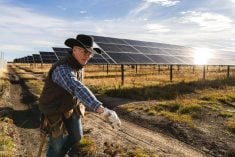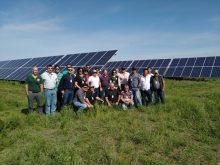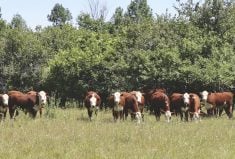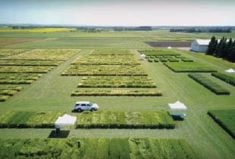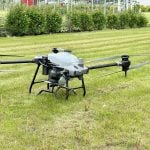Cory Nelson isn’t what you might call a ‘tree hugger.’ But the Grassy Lake-area farmer is a businessman, and to him, solar energy just makes good financial sense.
“We view it as an investment,” said Nelson, who grows a variety of crops under irrigation on his southern Alberta farm.
“Our best math said it was going to take around 15 years to pay back. After that, we think we’ll probably get another 20 or 25 years of benefit from it. At that time, we think we’ll be making pretty decent money on that investment.
Read Also
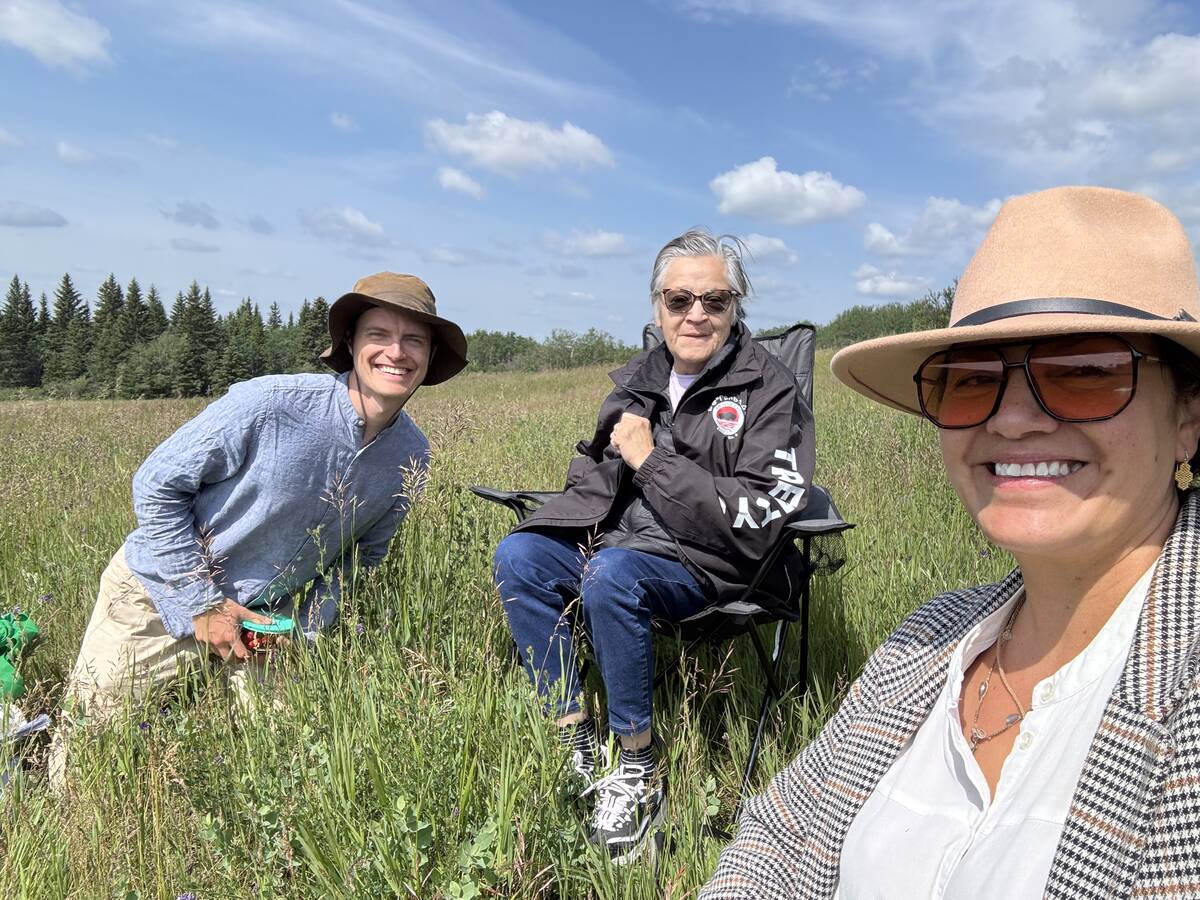
Fostering reconciliation one farm at a time
The Treaty Land Sharing Network has grown slowly throughout its first year in Alberta, but landowners are starting to get on board.
“If I buy a piece of land, it’s typically going to take a long time to pay it back as well. We don’t mind viewing things in the long term.”
Nelson was looking for ways to stabilize his irrigation pumping costs last year, and solar panels seemed like “a novel idea.” Last spring, he started the process of installing solar panels on two pieces of his land — one system with a capacity of 92 kilowatts and the other about 45 kilowatts.
“The one site is built for the equivalent of watering two quarters of land and then the bigger one is based on watering four quarters of land,” said Nelson.
The Enmax program Nelson operates under requires him to run a “net-zero system,” where he produces enough power to offset the power he uses at the sites to run his pivot and his pump. This type of ‘grid-tied system’ — an on-grid solar energy system that connects to an existing power grid — allows Nelson to use as much power as he needs in the summer while refilling the ‘bank’ in the winter.
“In the summer when I’m using power, I’ll be using power from the grid and it will be slightly supplemented. I’d be getting two-thirds of my power from the grid on a given day and producing one-third,” he said. “In the winter, I’ll slowly whittle away at that bill.”
(The efficiency of solar systems actually increases when the temperature drops.)
The other financial factor is that Nelson no longer has to worry about a hike in electricity rates.
“If the price of power goes up 10 or 20 years from now, it doesn’t affect me. I’m producing my own power.”
Growing interest
Those long-term cost savings have sparked a surge of interest in solar panels among Alberta farmers, said Rob Harlan, executive director of the Solar Energy Society of Alberta.
“A lot of the growth is being driven by pure economics, and we don’t think that momentum is going to change too much,” said Harlan.
Compared to other forms of energy in the province, solar power generation is still “minuscule” but growing, said Harlan, who spoke at a Foothills Forage and Grazing Association workshop in mid-March.
“In the last three years, the installed capacity in Alberta has pretty much increased by 100 per cent per year, and we really anticipate that that growth is going to continue even steeper.”
Right now, there are about 1,800 grid-tied solar systems in Alberta generating almost 20 million kilowatt hours of energy a year. (It’s impossible to know how many off-grid systems there are.) The goal is to have 10,000 systems installed by 2020 — a jump from about 17 megawatts of generating capacity to around 100 megawatts.

“The biggest factor is the cost per watt of solar modules themselves. In 1977, the cost per watt was US$76. In 2015, it was US$0.54 per watt,” said Harlan.
“That trajectory continues to drop. It’s all about economy of scale. The larger the market gets, the more efficient it is to produce these things.”
But make no mistake — solar energy systems still come with a hefty price tag. Nelson likens the price of his system to that of a quarter section of dryland in his area.
“It’s expensive. You’ve got to come up with the money in the first place,” said Nelson.
“There was a little bit of funding from the government, but it’s fairly minimal.”
While producers can access Growing Forward 2 funding from the government of Alberta, they should expect to spend around $3 a watt for a roof-mounted system and $3.50 a watt for a ground-mounted one.
“If it’s a 10-kilowatt system, a roof mount is $30,000 and a ground mount is $35,000,” said Harlan.
“As systems get bigger, the costs drop. If they’re really small, the price per watt might increase.”
Finding deals
But ‘turnkey system’ costs have become “competitive,” and producers can expect to see a return on their investment as early as nine years, depending on site conditions, degradation, utility price changes, government support, and other factors.
“That’s why it takes patience with these things. The investment really comes in over time,” said Harlan.
“Once the system is amortized, the savings can be quite good.”
And there are some deals out there, if you know where to look. Rancher Steve Kenyon has gone almost completely off-grid for around $10,000 by scouring Kijiji for sales. (His system, which includes batteries, would have cost $15,000 to $20,000 new, he said.)
“For us, it basically came down to cost,” said the Busby-area custom grazer. “We’re trying to lower our overall living costs. We got tired of the big mortgage and all the bills.”
Kenyon first dipped his toes into using solar energy “years ago” with solar watering systems for his cattle, but after selling their house, the Kenyon family decided to take their operation completely off-grid.
“To get power in was $27,000, so we decided to go with solar,” said Kenyon. “We bought a bunch of used solar systems and put them all together.
“It’s not all brand-new equipment by any means, but we’ve put together solar panels and batteries off Kijiji, and we got an inverter (which turns solar energy into usable energy) from a company that’s been helping us.”
Kenyon would “jump on” any solar equipment he found on Kijiji, and once he had amassed a variety of panels, he worked with a consultant to design a system that would work for his needs — 15 wall panels at 140 watts each. After that, he installed the system himself with some buddies.
“I basically mounted all the panels on the side of the shop. We didn’t use fancy mounting brackets or anything. We made it work farmer style.”
The system will not only power the shop but the new home the Kenyons are building this year.
“Our only utility bills are cellphones and Internet,” he said.
Reduced risk
Right now, Kenyon is running his shop — complete with three deep-freezes for his direct-marketed beef — and even his electric fencing off solar panels. But come summer, his new house will be run off solar power too.
“It’s pretty new. We’ve got it up and running, but we’re still testing it. So far, it’s nice not to have a generator running,” said Kenyon of the month-old system.
“On our current system with our batteries, if we went three days without any sun, we’d still have power. After three days of cloud, we might have to start the generator at our current load.”
Despite that, Kenyon actually finds his solar generation system more reliable than the electrical system he used to be on.
“In my old place, we had two deep-freezes go down because the power system failed, and each time, it was at least $1,500 worth of meat that we lost,” he said. “I’m in control of it now; before I wasn’t.
“If need be, I’ve got a tank full of fuel here and I can run my generator as a backup. Our deep-freezes will still run if the power goes out for six hours. To me, it’s lowering my risk, not increasing it.”
In addition to the cost savings, Kenyon appreciates the ability “to do everything remotely.”
“I don’t have to bring in power poles and a transformer to get power to the place. Solar is portable. It can go anywhere. If I get more land, I can move a fence over there. Everything is temporary and portable.”
And while Kenyon is sold on solar power, the jury is still out as to whether it will be a good fit on Nelson’s operation. Right now, about one-quarter of his farm is powered by solar energy, but he wants to see how his system (which was up and running in October) operates for a full season before deciding to expand.
“It was an expensive venture, so it’s something you have to spend a little bit of time looking at the numbers and decide whether it’s going to work for you or not,” said Nelson.
“In the case of irrigation, it just seemed like a really good fit. We’re fairly confident it will be a good long-term investment.
“If it works well, we’ll definitely evaluate it and see if there’s another investment we’d like to make.”
Wondering if solar might be a fit on your farm?
Before signing a contract for a solar installation, the experts strongly advise doing some serious homework first.
It’s not only a big investment, but there are a lot of factors to consider and you’ll possibly be living with your decision for decades.
A good place to start is www.solaralberta.ca, which has an extensive database of information ranging from how solar power works and basic FAQs to information on grants and how to select a solar contractor.



